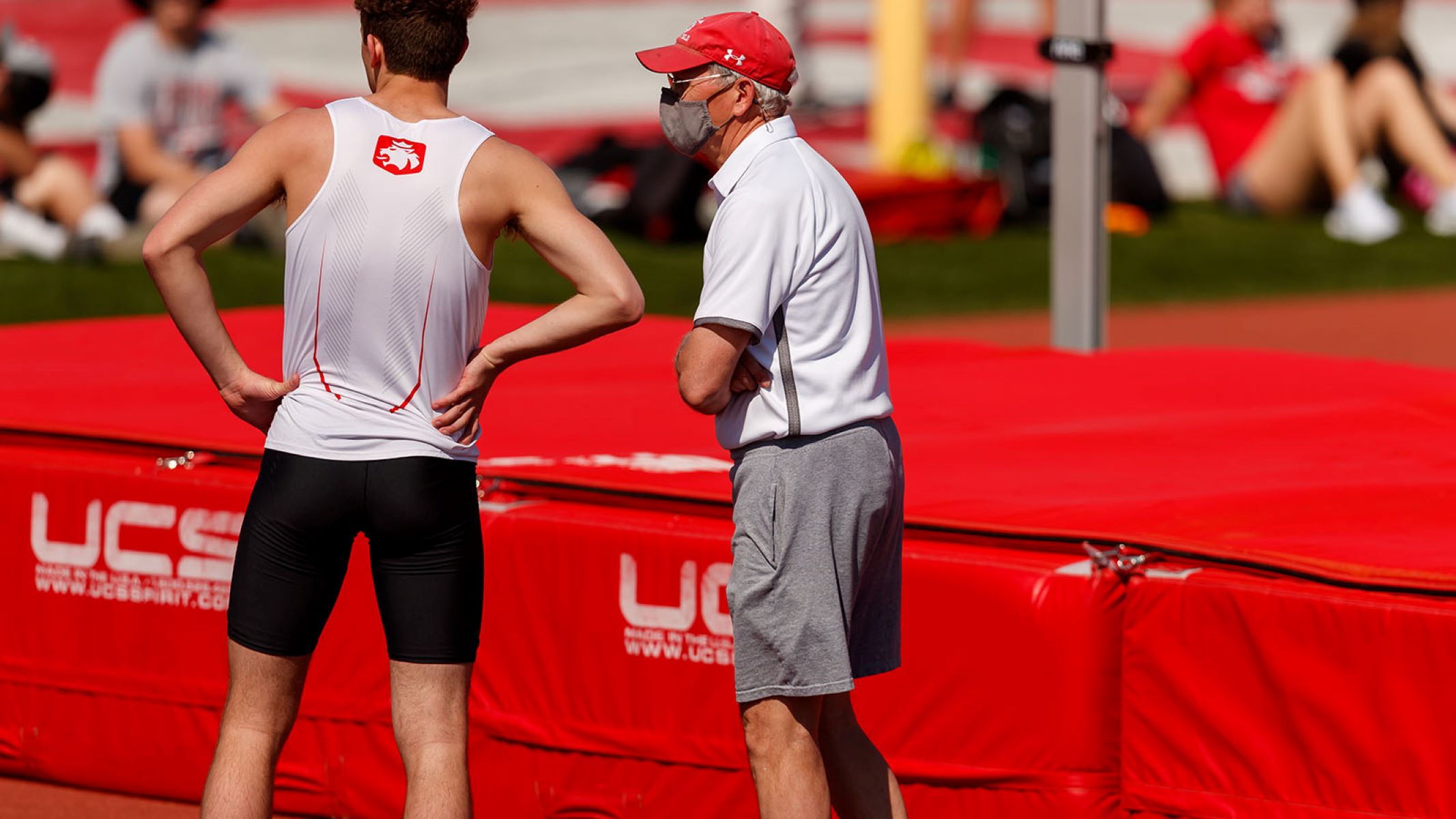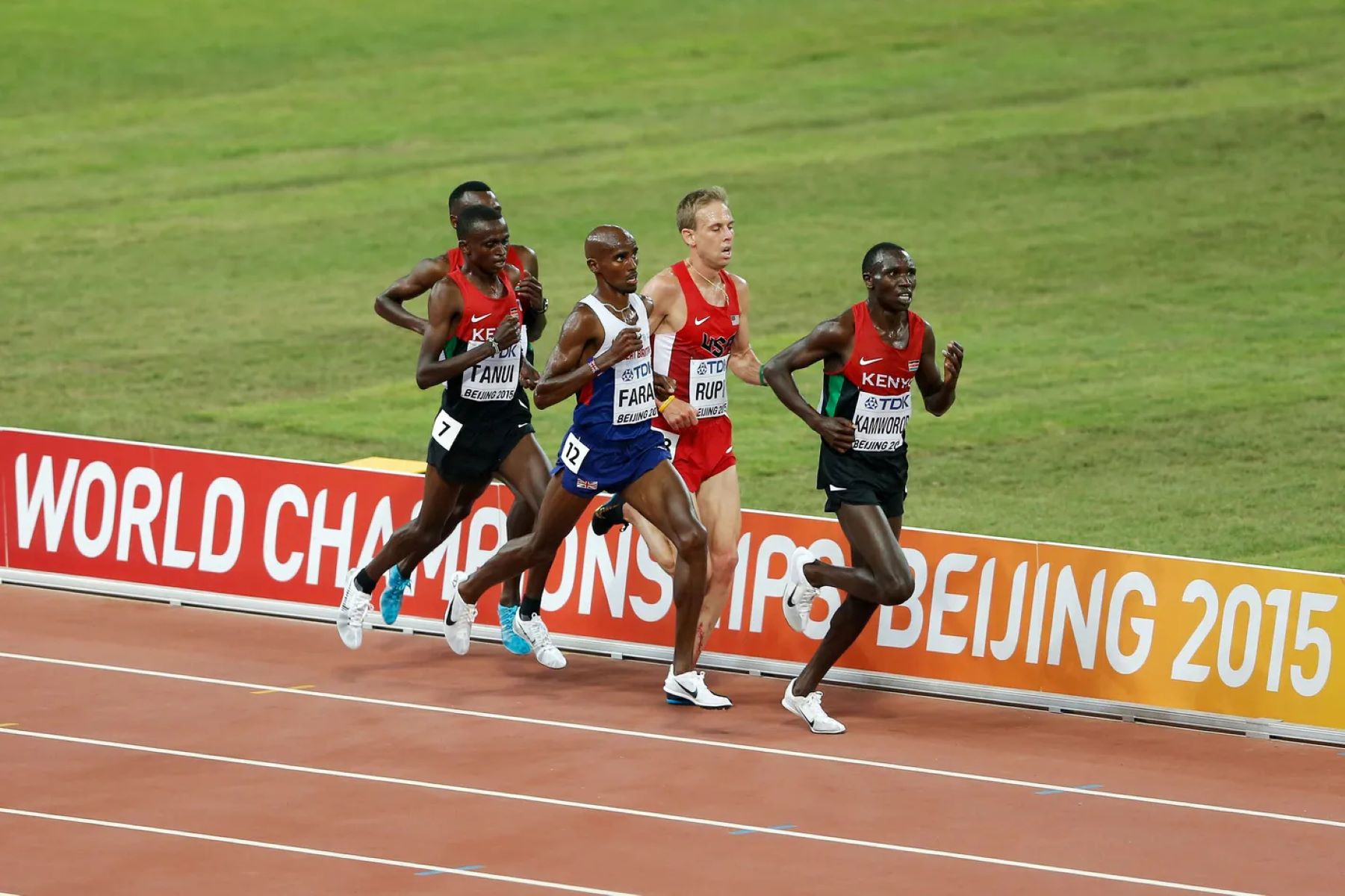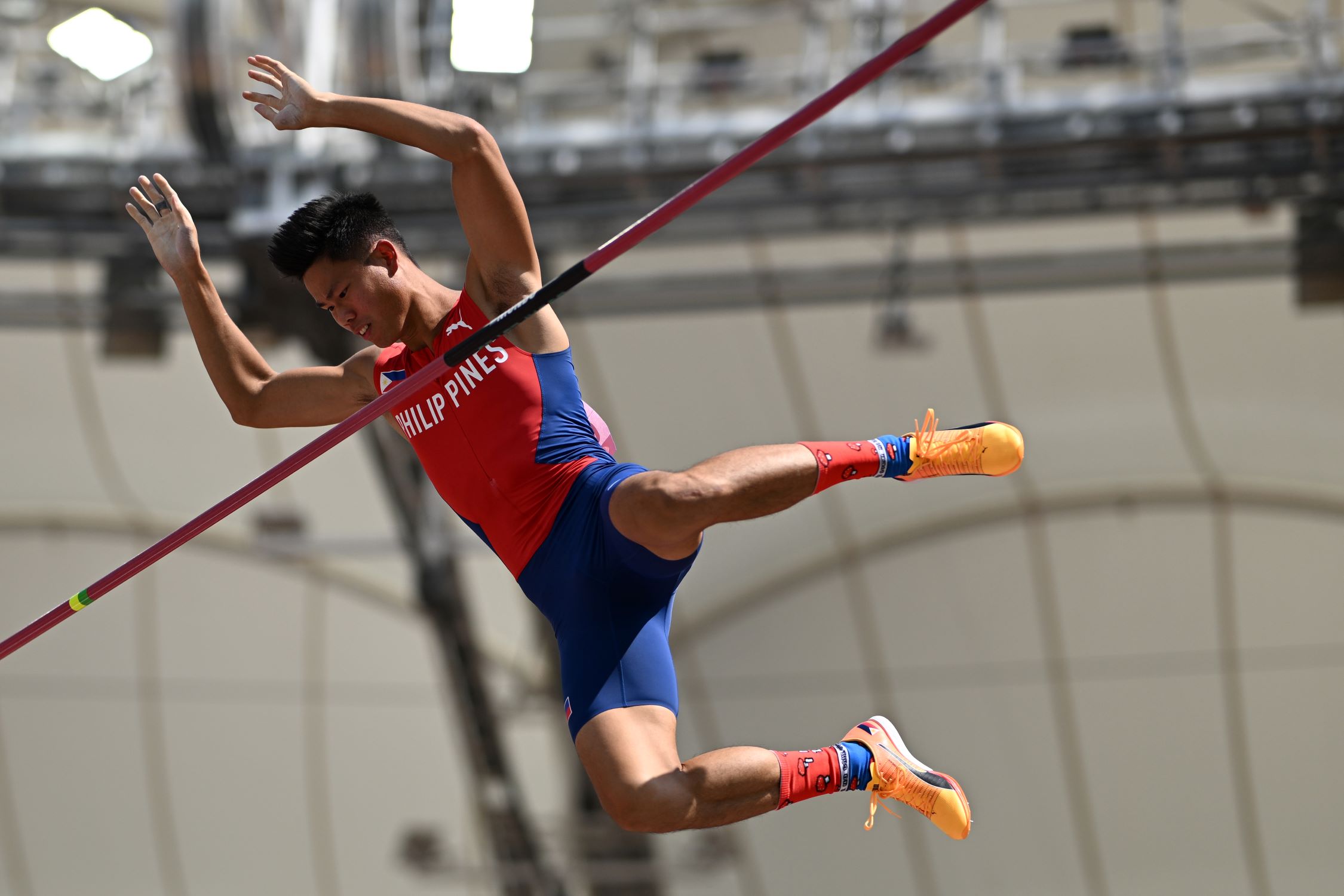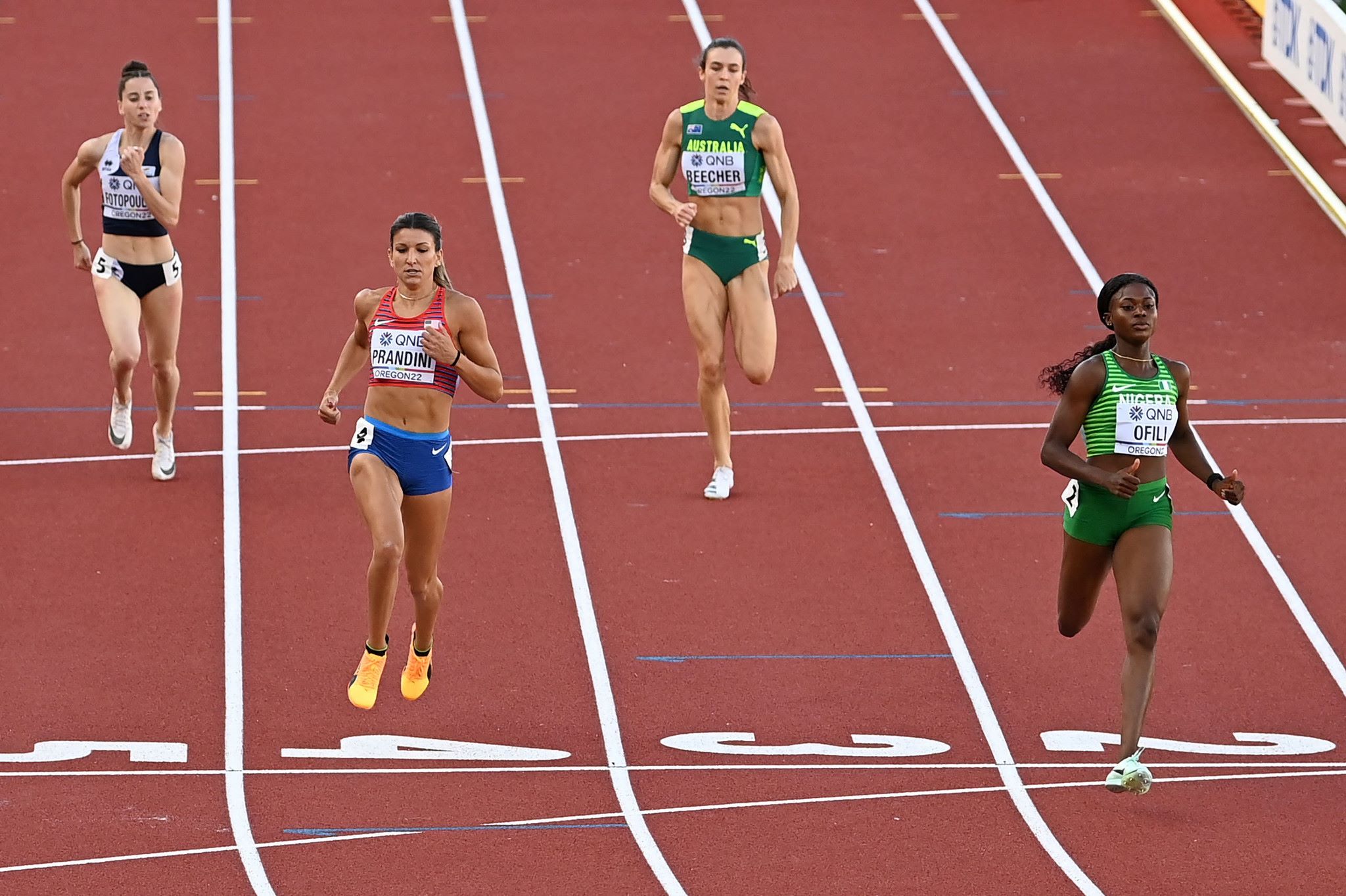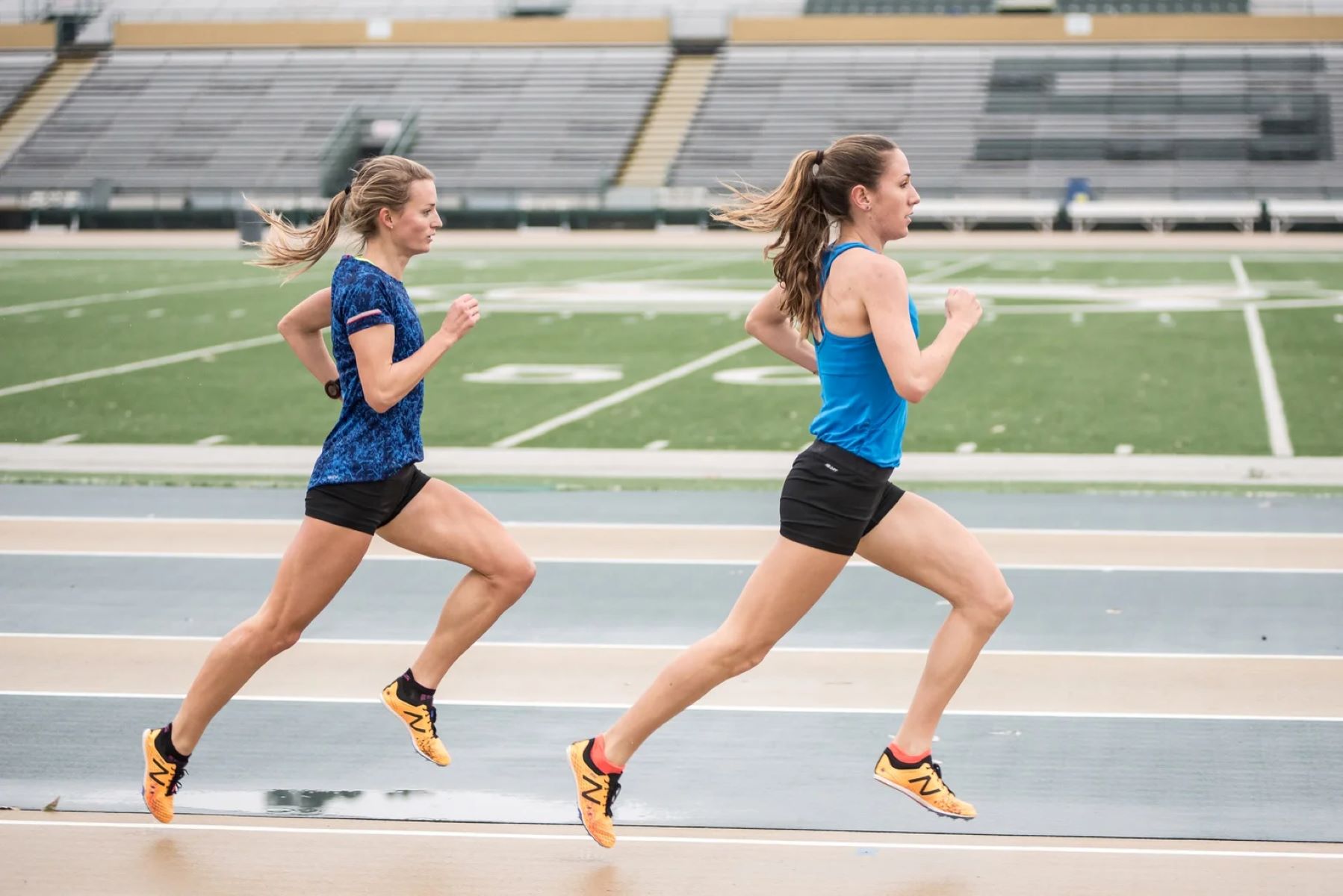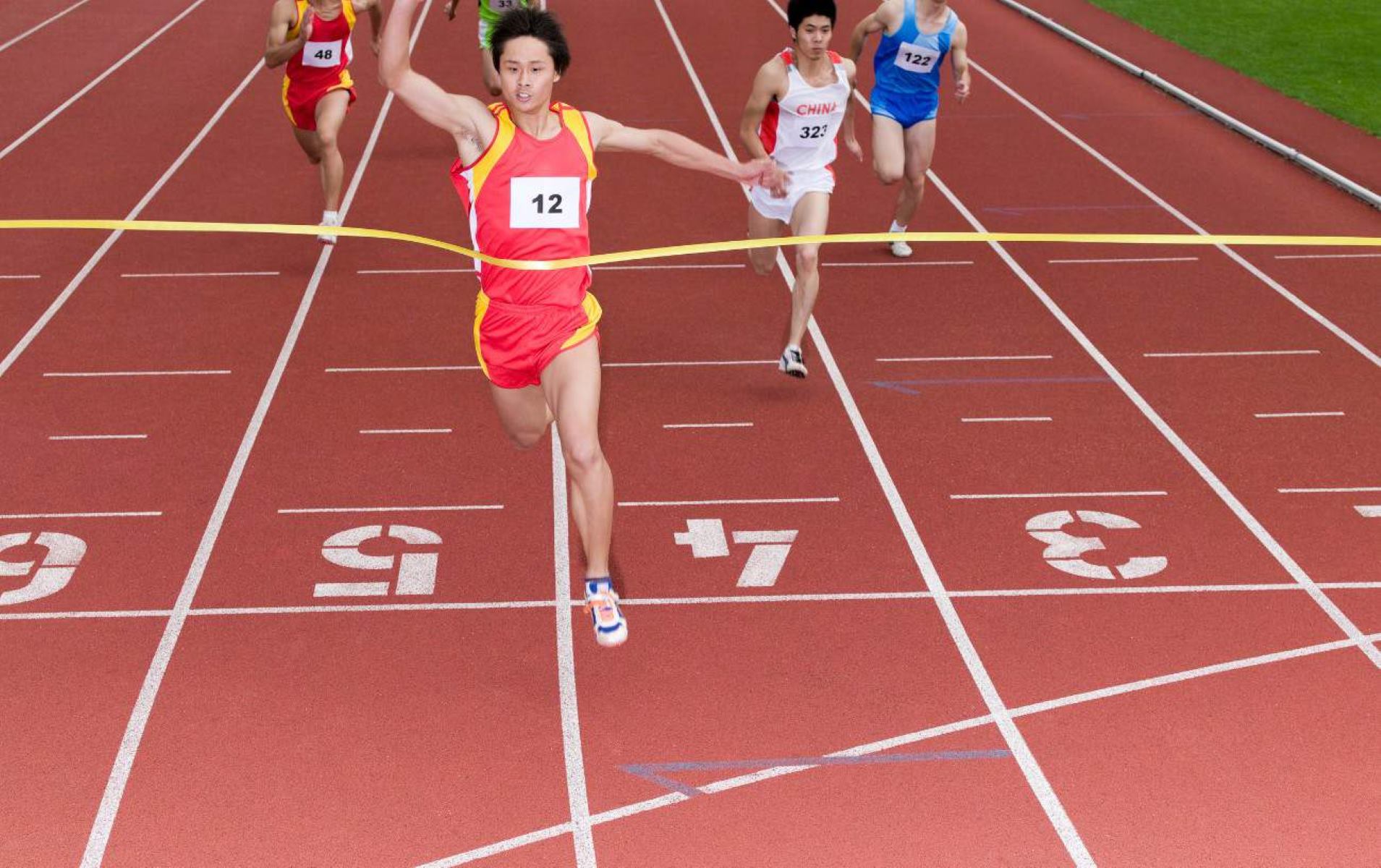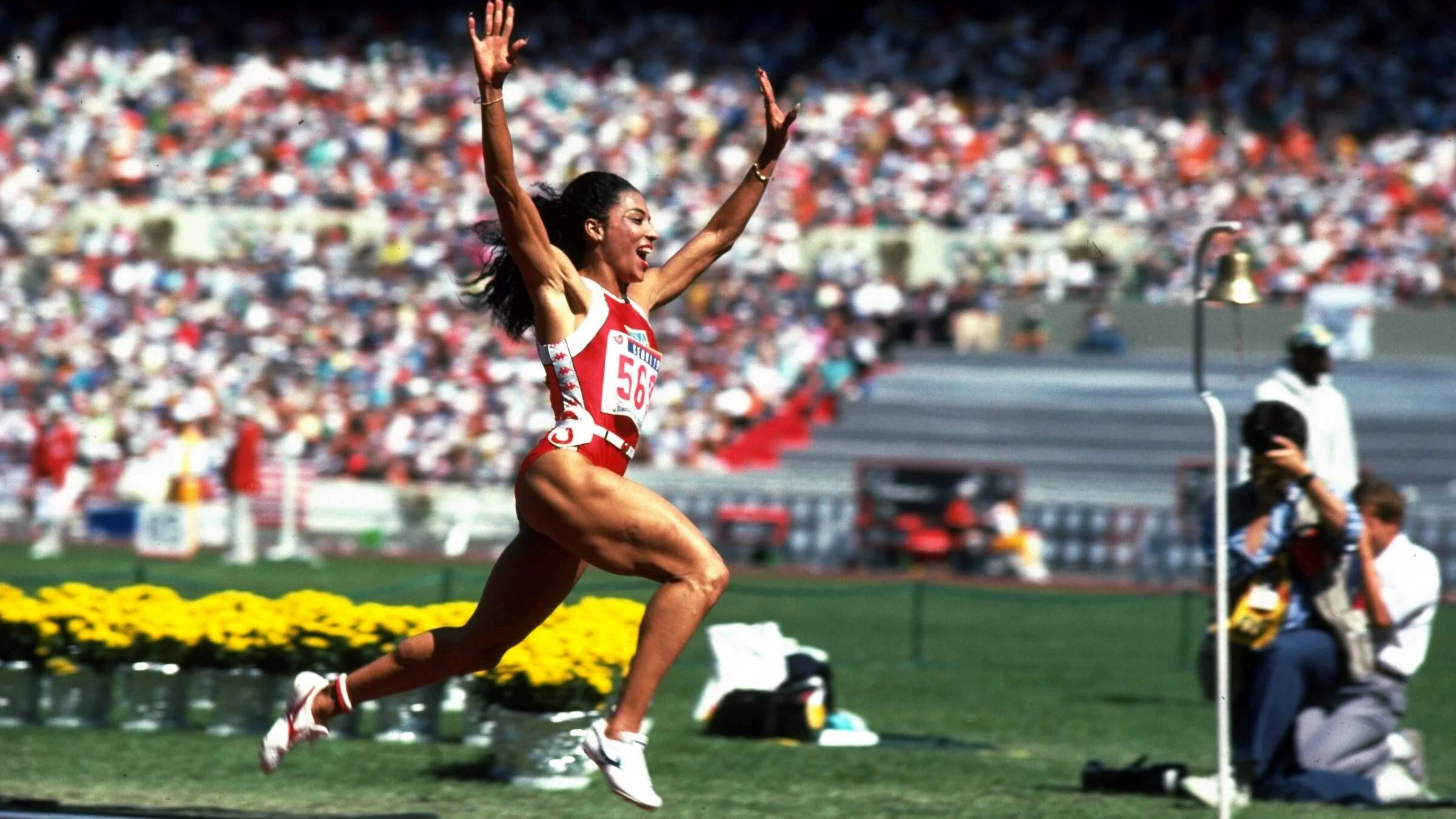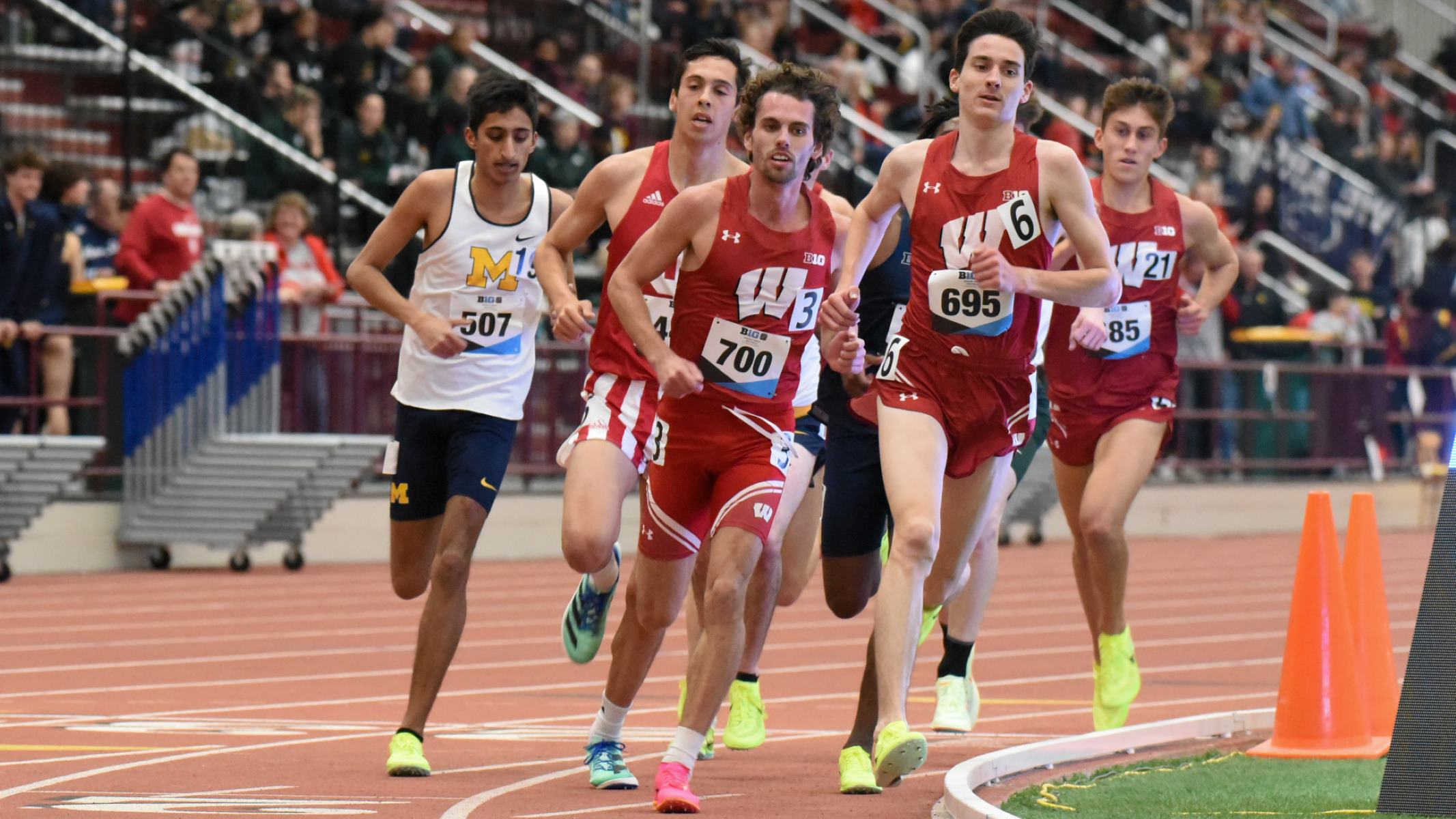

Featured
How To Run Track And Field Unattached
Published: November 12, 2023
Learn how to participate in track and field competitions as an unattached athlete. Discover the benefits of being featured in this exciting sport.
Introduction
Running track and field is a thrilling and competitive sport that has captured the hearts of athletes worldwide. It combines speed, strength, technique, and endurance to push the boundaries of human performance. While many track and field athletes compete as part of a team or club, there is also the option to participate “unattached.”
But what does running track and field unattached actually mean? Put simply, it refers to athletes who compete independently, without being affiliated with a specific team or club. Running unattached can provide an opportunity for individual athletes to showcase their talent, pursue personal goals, and gain valuable experience in the sport.
In this article, we will explore the concept of running track and field unattached, discussing the benefits it offers, and providing practical advice for those interested in pursuing this path. Whether you’re a seasoned track and field athlete looking to try something new or a newcomer to the sport eager to compete, this guide will equip you with the knowledge and tools to navigate the world of unattached running.
From finding track meets to registering as an unattached athlete, from training and conditioning to race day strategies, we will cover all the essential aspects of running track and field unattached. We will also delve into the challenges and setbacks that unattached athletes may face, along with tips for staying motivated and focused throughout the journey.
If you have ever dreamed of stepping onto the track as a solo competitor, defying your own limits, and experiencing the thrill of racing against the clock, running track and field unattached may be the path for you. Let’s dive in and explore this exciting opportunity in the world of sports.
What Does Running Track and Field Unattached Mean?
Running track and field unattached refers to participating in track and field events as an independent athlete, without being affiliated with a specific team or club. This means that you compete on your own, without the support and representation of a larger group. While many athletes choose to compete as part of a team, running unattached offers a unique opportunity for individual athletes to showcase their skills and pursue personal goals.
When you run track and field unattached, you have the freedom to choose which events you want to compete in, without any restrictions or obligations imposed by a team or club. Whether you enjoy sprinting, long-distance running, hurdles, or field events like high jump or shot put, you have the autonomy to select the events that align with your strengths and interests.
Running unattached can be particularly beneficial for athletes who have an entrepreneurial mindset and prefer to take charge of their own athletic journey. It allows you to have direct control over your training, scheduling, and competition selection, enabling you to customize your track and field experience to suit your individual needs.
Another advantage of running track and field unattached is the opportunity to gain valuable experience and exposure in the sport. By competing independently, you can enter a variety of track meets and compete against athletes from different backgrounds and skill levels. This exposure can help you improve your performance, learn from other athletes, and expand your network within the track and field community.
Additionally, running unattached can be a great option for athletes who may not have access to a team or club in their area. It allows you to pursue your passion for the sport even if you don’t have a formal support system readily available. Whether you’re a student at a school without a track team or an adult who wants to continue competing after college, running unattached enables you to continue participating in track and field independently.
While running track and field unattached offers many benefits, it’s important to note that it is not the right choice for everyone. Joining a team or club can provide a sense of camaraderie, structured training programs, and access to coaching expertise that can greatly enhance an athlete’s performance. However, if you prefer the independence and flexibility that comes with running unattached, it can be a fulfilling and rewarding experience.
In the next section, we will explore the various benefits of running track and field unattached, and why many athletes choose to pursue this path.
Benefits of Running Track and Field Unattached
Running track and field unattached offers a range of benefits for athletes who choose to pursue this path. While competing as part of a team or club can provide a sense of unity and structure, running unattached provides unique advantages that can enhance an athlete’s experience and personal growth.
One of the primary benefits of running track and field unattached is the freedom to choose your own events. As an unattached athlete, you have the flexibility to specialize in the events that align with your strengths and interests. Whether you prefer sprinting, middle-distance, long-distance, hurdles, or field events, you can tailor your training and competition schedule to focus on the events that you enjoy and excel in.
Running unattached also allows for more autonomy in training. Without the constraints of a team or club training schedule, you can design your own training program and customize it according to your specific needs and goals. This level of control can be empowering and enable you to experiment with different training techniques and strategies to find what works best for you.
Furthermore, running track and field unattached provides the opportunity to compete more widely. While team athletes often participate in meets primarily organized by their respective leagues or associations, unattached athletes have the freedom to compete in a variety of local, regional, and even national meets. This exposure to different competitions and opponents can broaden your racing experience, help you develop valuable racecraft, and expose you to a wider network of athletes and coaches.
In addition to increased competition opportunities, running unattached also allows you to connect with the track and field community more deeply. By attending various meets, you can meet athletes from different teams, coaches, and officials who are passionate about the sport. These connections can lead to valuable insights, advice, and support from individuals who share your love for track and field.
Running track and field unattached can also be a great option for athletes who do not have access to a team or club in their area. This could be due to geographical limitations, lack of resources, or any other circumstances that prevent joining a team. Running unattached allows these athletes to continue participating in the sport they love, maintaining their fitness and pursuing their goals independently.
Lastly, running unattached offers the opportunity to build self-confidence and resilience. When you compete as an individual athlete, you have to rely solely on your own abilities and mental fortitude. This can cultivate a strong sense of self-belief and the ability to overcome challenges on your own. Running unattached can be a powerful platform for personal growth and development, both in and out of the track and field arena.
Overall, running track and field unattached provides a unique and rewarding experience for athletes. It offers the freedom to choose events, autonomy in training, increased competition opportunities, deeper connections within the track and field community, and the ability to continue participating in the sport independently. In the following sections, we will explore how to get started as an unattached athlete and find track meets that cater to this specific category.
Getting Started: Joining a Track Club or Team
While running track and field unattached provides a level of independence and flexibility, joining a track club or team can offer valuable resources and support to enhance an athlete’s performance. If you are considering participating in track and field as part of a team, here are some steps to help you get started.
1. Research local options: Start by researching track clubs or teams in your area. Look for clubs or teams that align with your goals, training preferences, and available facilities. Consider factors such as coaching expertise, training schedules, and the track meets they participate in. Gathering as much information as possible will help you make an informed decision.
2. Reach out for information: Once you have identified potential clubs or teams, reach out to them for more information. Contact the coaches or team managers and inquire about their training programs, membership requirements, and any specific expectations they have for athletes. This will give you a better understanding of what to expect and whether the club or team is the right fit for you.
3. Attend tryouts or practices: Many track clubs or teams offer tryouts or open practices for prospective athletes. Take advantage of these opportunities to get a first-hand experience of the club or team’s training environment. This will give you an idea of the coaching style, team dynamics, and overall atmosphere of the program. It’s also a chance for coaches to assess your skills and determine if you are a good fit for their team.
4. Consider the financial aspect: Joining a track club or team may involve financial commitments such as membership fees, training fees, and travel expenses for competitions. Take into account your own budget and evaluate whether you can comfortably afford the costs associated with the club or team. Some clubs offer scholarships or financial aid options, so be sure to inquire about these possibilities if needed.
5. Commitment and compatibility: Joining a track club or team requires a certain level of commitment. Evaluate your availability and willingness to adhere to their training schedule, attend practices, and compete in meets. Consider the compatibility of your personal goals and the goals of the club or team. Make sure that both align well, and that the club or team can support your aspirations in the sport.
6. Seek recommendations and reviews: Talk to current or former athletes who have been a part of the track clubs or teams you are interested in. Their insights and experiences can provide valuable information about the training quality, coaching styles, and overall satisfaction within the program. Online forums, social media groups, and sports communities can also provide a platform for seeking recommendations and reading reviews.
By carefully considering these steps and gathering as much information as possible, you can make an informed decision about joining a track club or team. Ultimately, the right club or team will provide you with the support, resources, and camaraderie to excel in your track and field journey.
Finding Track Meets for Unattached Athletes
As an unattached athlete, finding track meets to compete in is an important aspect of your journey. While team athletes often have their schedules and meets organized by their respective leagues or associations, unattached athletes have the flexibility to choose which meets they participate in. Here are some tips to help you find track meets as an unattached athlete:
1. Research local and regional meets: Start by researching track meets in your local area and nearby regions. Look for meets that are open to unattached athletes or explicitly mention allowing individual entries. Local athletics websites, track and field governing bodies, and social media groups for runners are great resources for finding information about upcoming meets. Consider factors such as the events offered, competition level, and suitability to your performance level.
2. Connect with the track and field community: Networking within the track and field community can be highly beneficial for finding track meets as an unattached athlete. Attend local club meets, engage in conversations with athletes, coaches, and officials, and join social media groups or forums dedicated to track and field. By building connections, you may come across information or recommendations for track meets specifically designed for unattached athletes.
3. Utilize online meet directories: Online meet directories can be a valuable resource for finding track meets to compete in. Websites and platforms dedicated to track and field, such as Athletic.net and Direct Athletics, provide comprehensive listings of upcoming meets in various locations. You can search for meets based on event type, date, and geographic location, making it easier to identify relevant competitions for your needs.
4. Check with local high schools and colleges: Local high schools and colleges often host track meets that are open to unattached athletes. As schools regularly organize meets as part of their athletic programs, it can be a great opportunity to compete alongside team athletes and gauge your performance against a diverse range of competitors. Reach out to the athletic departments of these institutions or check their websites for information on upcoming meets open to unattached athletes.
5. Consider non-traditional track meets: In addition to conventional track meets, consider participating in non-traditional events that cater specifically to unattached athletes. Some organizations or community groups may organize fun runs, time trials, or charity races that provide opportunities for competitive running. While these events may not be officially recognized by track and field governing bodies, they can still offer a chance to test your skills and enjoy the experience of racing.
6. Create your own opportunities: If you cannot find suitable track meets in your area or if you prefer a more informal setting, consider organizing your own meet. Gather a group of fellow unattached athletes, secure a track or field facility, and create your own competition. This allows you to customize the events, choose the format, and invite other unattached athletes to join. It can be a fun and collaborative way to create competitive opportunities where you can showcase your abilities.
By utilizing these strategies and resources, you can find track meets as an unattached athlete and continue to participate in the sport you love. Keep an eye on upcoming events, stay connected with the track and field community, and seize the opportunities that come your way to showcase your talent and achieve your goals.
Registering for Track Meets as an Unattached Athlete
Once you have identified track meets that you would like to compete in as an unattached athlete, the next step is to register for these events. While the process may vary slightly depending on the meet organizer, here are some general steps to follow when registering for track meets:
1. Review the meet information: Carefully read the meet information provided by the organizer. This will typically include details such as the date, location, events offered, entry fees, eligibility requirements, and any specific registration instructions. Make note of any deadlines and important information to ensure you don’t miss out on the opportunity to register.
2. Complete the registration form: Most track meets require athletes to fill out a registration form. This form may be available for download on the meet organizer’s website or provided via an online registration platform. Fill out the form accurately and provide all the necessary information, including your name, contact details, age group, affiliated club (if applicable), and the events you wish to enter.
3. Submit the registration form: Follow the instructions provided by the meet organizer to submit your registration form. This may involve mailing the form to a specified address or submitting it electronically through an online registration portal. Pay attention to any fees that need to be included and ensure that you meet any eligibility requirements set by the organizer.
4. Keep a copy of your registration: After submitting your registration form, make sure to keep a copy for your records. This will serve as proof of your registration and can be helpful in the event of any issues or discrepancies that may arise later on.
5. Pay the entry fees: Some track meets require athletes to pay an entry fee as part of the registration process. This fee helps cover the costs of organizing and hosting the event. Follow the payment instructions provided by the meet organizer, which may include methods such as online payment, mailing a check, or paying on the day of the event. Be sure to submit payment prior to any specified deadlines to secure your spot in the meet.
6. Check for confirmation: After submitting your registration form and payment, keep an eye out for any confirmation emails or notifications from the meet organizer. This may serve as confirmation of your entry into the meet and provide additional instructions or updates regarding the event. If you do not receive a confirmation, reach out to the meet organizer to ensure that your registration was received and processed correctly.
7. Plan your logistics: Once you have successfully registered for a track meet, it is important to plan your logistics. Take note of the date, time, and location of the event. Determine your travel arrangements and accommodations if necessary. Make sure to arrive well-prepared with the necessary equipment, attire, and any required documentation such as identification or health forms.
Remember to abide by the rules and regulations of the track meet and be respectful of the organizers, officials, and fellow athletes. Participating in track meets as an unattached athlete provides a platform to showcase your skills and compete against a diverse field of competitors. Enjoy the experience, give your best effort, and make the most of the opportunities presented to you.
Preparing for Track Meets: Training and Conditioning
Preparing for track meets as an unattached athlete requires a trained and conditioned body to perform at your best. Proper training and conditioning are essential to improve your performance, prevent injuries, and maximize your potential on race day. Here are some key considerations to help you prepare for track meets:
1. Develop a training plan: Create a structured training plan that aligns with your goals and the events you are targeting. This plan should incorporate a balance of endurance, speed, and strength training. Consult with a coach or experienced trainer to help you design a program that is tailored to your needs and abilities.
2. Train for event specificity: Focus your training on the specific events you will be competing in. Each event requires different skills and physical attributes, so tailor your workouts accordingly. Incorporate event-specific drills, repetitions, and techniques into your training regimen to improve your performance in those events.
3. Build endurance: Endurance is crucial for success in track and field events. Incorporate regular long runs, interval training, and tempo workouts to build your cardiovascular fitness. Gradually increase your training volume and intensity over time to improve your stamina and ensure that you are able to maintain a high level of performance throughout races.
4. Develop speed and power: Speed and power are essential components for sprinting and jumping events. Incorporate interval training, plyometric exercises, and resistance training to improve your explosiveness and speed. Work on drills that focus on improving your stride length, turnover rate, and overall power output.
5. Enhance technique and form: Work on refining your technique and form in each event. Seek feedback and guidance from experienced coaches or trainers to help you identify areas for improvement. Incorporate drills and exercises that target specific aspects of your technique to enhance efficiency and performance.
6. Include recovery and rest days: Rest and recovery are critical to allow your body to adapt and grow stronger. Incorporate rest days into your training plan to prevent overtraining and reduce the risk of injuries. Additionally, prioritize sufficient sleep, hydration, and nutrition to support your body’s recovery process.
7. Simulate race conditions: In your training, try to simulate race conditions as closely as possible. Practice performing the events with the same intensity and mindset that you would bring to a real competition. This can help you improve your mental focus, race strategy, and ability to perform under pressure.
8. Fine-tune your nutrition: Proper nutrition plays a crucial role in fueling your body for optimal performance. Ensure you are consuming a balanced diet that is rich in carbohydrates, protein, and healthy fats. Stay properly hydrated before, during, and after training sessions and track meets to support your performance and recovery.
Remember to listen to your body and adjust your training accordingly. If you experience any pain or discomfort, seek guidance from a healthcare professional to avoid further injury. By following a well-rounded training and conditioning plan, you will improve your physical capabilities, enhance your performance, and be better prepared for track meets as an unattached athlete.
Race Day Tips and Strategies for Unattached Runners
Race day is the culmination of your hard work and training as an unattached runner. To optimize your performance and maximize your potential on race day, it’s important to have a well-thought-out strategy and follow certain tips. Here are some race day tips and strategies for unattached runners:
1. Have a race day routine: Establish a routine that works for you on race day. It should include factors such as what you eat, when and how you warm up, and how you mentally prepare. Stick to this routine for consistency and to provide a sense of familiarity and comfort on race day.
2. Arrive early: Give yourself ample time to arrive at the race venue, check in, and get familiar with the surroundings. Being early allows you to warm up properly and mentally prepare without feeling rushed or stressed.
3. Understand the course: Study the course map and familiarize yourself with the course terrain and any challenging sections. This knowledge will help you plan your pacing strategy and anticipate any changes in elevation or turns.
4. Set realistic goals: Set realistic goals for the race based on your training and fitness level. Consider factors such as previous race performances, training times, and current physical condition. Setting achievable goals allows you to stay focused and motivated throughout the race.
5. Warm up properly: Engage in a dynamic warm-up routine to prepare your muscles, joints, and cardiovascular system for the demands of the race. Include exercises such as jogging, dynamic stretches, and strides to activate and loosen up your body.
6. Pace yourself: Find a comfortable pace at the start of the race that allows you to maintain a consistent effort throughout. Avoid starting too fast, as it can lead to early fatigue. Instead, aim to finish strong by pacing yourself evenly throughout the race.
7. Stay mentally focused: Maintain a positive and focused mindset throughout the race. Use mental strategies such as visualization, positive self-talk, and breaking the race down into smaller, manageable segments to stay motivated and mentally strong.
8. Utilize race markers: Take advantage of race markers such as kilometer or mile markers to gauge your pace and track your progress. Use these markers as checkpoints to assess how well you are sticking to your race plan and adjust your effort if needed.
9. Listen to your body: Pay attention to any signals your body is sending during the race. If you start feeling excessive fatigue or pain, adjust your pace or consider taking a short walk break to avoid injury. Trust your training and the decisions you make on race day.
10. Finish strong: As you approach the finish line, give it your all and finish strong. Dig deep and tap into your mental and physical reserves to sprint towards the finish. Celebrate your achievements and acknowledge the effort you put into the race.
Remember, every race is a learning opportunity. Reflect on your performance after each race and identify areas for improvement. By incorporating these race day tips and strategies into your preparation, you can optimize your performance and enjoy the satisfaction of achieving your best as an unattached runner.
Staying Focused and Motivated as an Unattached Athlete
As an unattached athlete in track and field, it can sometimes be challenging to stay focused and motivated without the support and camaraderie of a team or club. However, there are strategies you can implement to maintain your drive and passion for the sport. Here are some tips to help you stay focused and motivated as an unattached athlete:
1. Set meaningful goals: Establish specific, measurable, and attainable goals for your track and field journey. These goals can be related to performance, personal bests, or even personal growth. Having goals to work towards provides a sense of purpose and direction, motivating you to stay committed to your training and compete at your best.
2. Find a support system: Even as an unattached athlete, it’s important to surround yourself with a support system that understands and encourages your athletic pursuits. Seek out friends, family, or mentors who can provide support, accountability, and motivation throughout your journey. Share your goals and progress with them to stay motivated and inspired.
3. Develop a routine: Establish a structured routine that includes your training sessions, cross-training activities, and rest days. Having a consistent routine helps create a sense of stability and discipline, making it easier to stay focused and motivated. Stick to your schedule as closely as possible, adjusting it as needed to accommodate your personal and professional obligations.
4. Celebrate small victories: Acknowledge and celebrate the small victories and milestones along your track and field journey. Whether it’s improving your personal best, mastering a new technique, or maintaining consistency in your training, recognizing and celebrating these achievements boosts your motivation and confidence. Small wins build momentum towards your larger goals.
5. Stay inspired by others: Seek inspiration from fellow athletes, both within track and field and in other sports. Follow elite athletes, watch their performances, and read their stories to fuel your passion and determination. Engage with the broader track and field community through social media, forums, or local events to connect with like-minded individuals who share your love for the sport.
6. Embrace self-reflection and growth: Take the time to reflect on your progress, challenges, and areas for improvement. Engage in self-analysis to identify your strengths and weaknesses, and use this awareness to set new goals and improve your performance. Embrace failure as an opportunity for growth and learning, viewing setbacks as stepping stones towards success.
7. Keep a training journal: Maintain a training journal to record your workouts, progress, thoughts, and reflections. A journal serves as a valuable tool to track your performance, identify patterns, and assess your growth over time. It can also serve as a source of inspiration and motivation when you look back on how far you’ve come.
8. Rejuvenate with cross-training and rest: Incorporate cross-training activities and rest days into your routine. Engage in activities like swimming, cycling, or yoga to prevent burnout and provide variety in your training. Prioritize adequate rest and recovery to ensure that you stay physically and mentally fresh for your track and field endeavors.
9. Visualize success: Utilize visualization techniques to mentally rehearse and visualize yourself achieving your goals. Picture yourself performing at your best, crossing the finish line, or surpassing your personal bests. This mental imagery primes your mind for success and reinforces your motivation to work hard and make those visions a reality.
10. Stay passionate and remember your why: Tap into the passion and love you have for the sport. Remind yourself of why you started on this track and field journey in the first place. Connect with the joy and excitement that comes with competing and focus on the positive impact that the sport has on your life.
By implementing these strategies, you can stay focused, motivated, and committed as an unattached athlete. Embrace the independence that comes with running unattached, and use it as an opportunity to discover your full potential and achieve your personal track and field goals.
Overcoming Challenges and Setbacks as an Unattached Runner
As an unattached runner, you may encounter various challenges and setbacks along your track and field journey. However, with resilience, perseverance, and a positive mindset, you can overcome these obstacles and continue to progress towards your goals. Here are some strategies for navigating challenges and setbacks as an unattached runner:
1. Embrace a growth mindset: Develop a growth mindset that views challenges and setbacks as opportunities for learning and growth. Instead of getting discouraged by setbacks, see them as stepping stones towards improvement. Embrace the belief that you have the capacity to develop your skills and abilities through dedication and effort.
2. Seek support and guidance: Reach out to your support system, whether it’s friends, family, coaches, or fellow athletes. Share your challenges and setbacks with them and seek their advice and guidance. They can offer a different perspective, provide encouragement, and help you find solutions to overcome obstacles.
3. Reflect and adjust: When faced with challenges or setbacks, take the time to reflect on what went wrong and identify potential areas for improvement. Adjust your training plan or approach if necessary. Use setbacks as learning opportunities to adapt and refine your strategy moving forward.
4. Focus on what you can control: Recognize that there are certain aspects of your journey that are beyond your control, such as weather conditions or competition outcomes. Instead of dwelling on these factors, focus on what you can control – your training, mindset, and approach to each race. Direct your energy towards these controllable factors and make the most of them.
5. Set realistic expectations: Avoid setting unrealistic expectations for yourself, as this can lead to disappointment and burnout. Recognize that progress in track and field takes time and consistency. Set achievable goals that are based on your current abilities and take incremental steps towards them.
6. Develop mental resilience: Cultivate mental resilience to handle setbacks and challenges with composure and determination. Practice techniques such as positive self-talk, visualization, and mindfulness to stay focused and maintain a strong mindset. Develop strategies to cope with negative thoughts or doubts that may arise during difficult times.
7. Find motivation in setbacks: Instead of becoming disheartened by setbacks, use them as motivation to fuel your determination. View setbacks as opportunities to prove yourself, challenge your limits, and work even harder towards your goals. Use setbacks as fuel to push yourself to new heights.
8. Stay adaptable and flexible: Remain adaptable and flexible in your approach. Sometimes plans may need to be adjusted due to unforeseen circumstances or changes in your circumstances. Embrace the ability to adapt to new situations and make necessary changes to your training or competition schedule.
9. Learn from setbacks: Rather than dwelling on setbacks, learn from them. Analyze what went wrong, identify any patterns or weaknesses, and use that knowledge to improve. Embrace setbacks as valuable lessons that will ultimately make you a stronger and more resilient athlete.
10. Stay committed and passionate: Ultimately, staying committed to your journey as an unattached runner requires passion and dedication. Stay connected with your love for the sport and the reasons why you started in the first place. Draw inspiration from your passion and allow it to fuel your drive to overcome any challenges or setbacks that come your way.
Remember that setbacks are a natural part of the journey towards success. By adopting a positive mindset, seeking support, adapting to challenges, and staying passionate, you can navigate the challenges and setbacks as an unattached runner and emerge stronger and more determined to achieve your track and field goals.
Conclusion
Running track and field unattached offers a unique and rewarding experience for athletes who want to compete independently. While it may present challenges, it also opens up a world of opportunities, allowing you to pursue your own goals, showcase your talent, and connect with the larger track and field community. By understanding what it means to run unattached, exploring the benefits it offers, and taking the necessary steps to get started, you can embark on an exciting journey in the world of track and field.
As an unattached athlete, it is crucial to stay focused, motivated, and resilient. Setting meaningful goals, finding support systems, and embracing a growth mindset are essential to maintain your drive and discipline. Additionally, preparing for track meets through proper training and conditioning, adopting race day strategies, and overcoming challenges and setbacks will help you perform your best on the big day.
Remember, whether you choose to join a team or run unattached, both paths have their own merits. It’s important to find what works best for you and aligns with your goals and aspirations. Throughout your journey, stay connected with your passion, appreciate the joy of competing, and celebrate your achievements along the way.
Running track and field unattached allows you to not only test your physical prowess but also tap into your mental toughness and push beyond your limits. It offers an opportunity for personal growth, self-discovery, and the pursuit of excellence on your own terms. So lace up your shoes, step onto the track, and embrace the freedom and excitement that comes with being an unattached runner. Your journey awaits!
